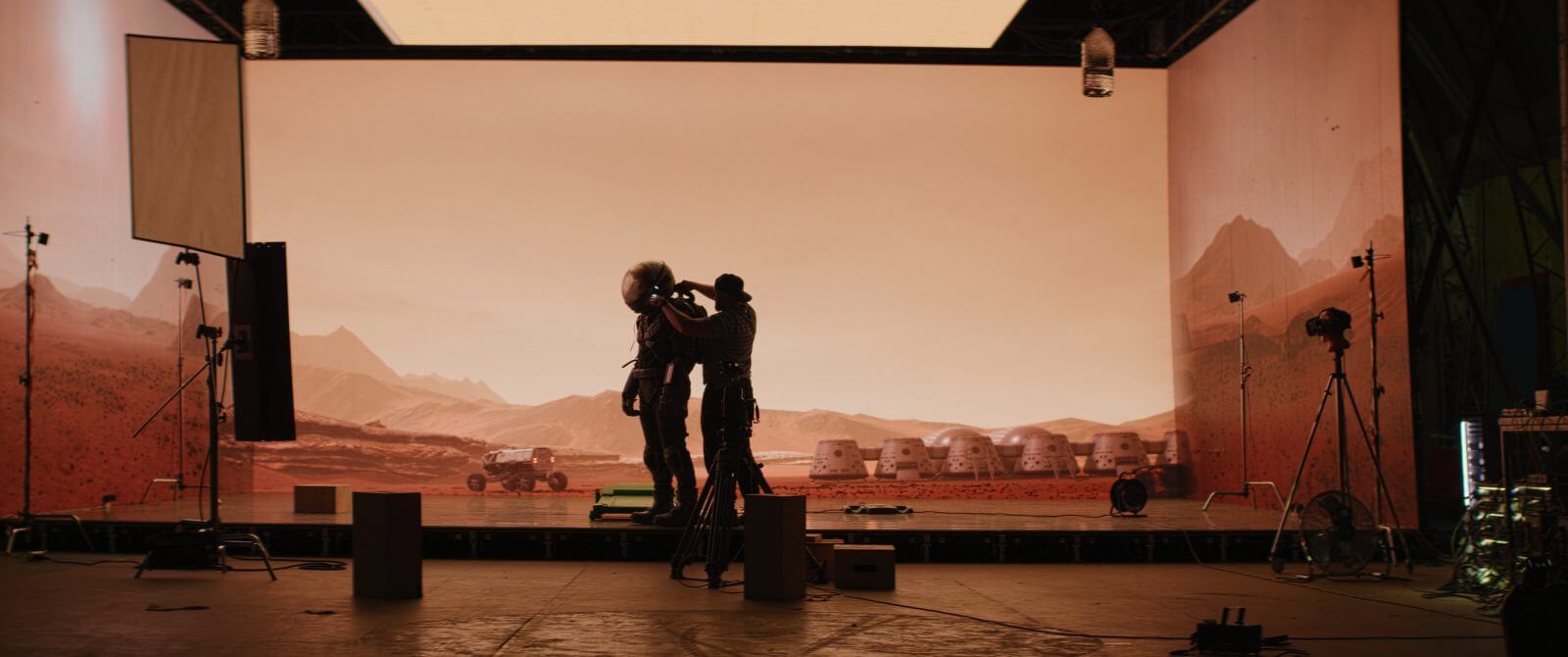Discover the game-changing world of virtual production, leaving behind the limitations of green screens. This innovative technique is revitalising the filmmaking industry, with major players like Disney and revered figures like Attenborough embracing its potential. Disney are using it for their hit shows, Attenborough loves it and big brands around the world are embracing its potential. Even smaller businesses are leveraging virtual production to create stunning visuals for their marketing and communication needs.
In this comprehensive article, we’ll explore:
- What is virtual production?
- Unveiling the fascinating history of virtual production in filmmaking
- Understanding the inner workings of virtual production
- Delving into the intriguing technical aspects of virtual production
- The future of Virtual Production
What is Virtual Production?
Virtual production is an innovative technique that seamlessly merges physical and virtual filmmaking to produce visually captivating results. It harnesses the power of real-time 3D engines, akin to game engines, to design incredibly realistic sets based on limitless imaginative possibilities. These sets are then projected onto expansive LED walls, serving as dynamic backdrops alongside physical sets. Leveraging real-time rendering capabilities, virtual production achieves a harmonious integration of virtual and physical elements, offering viewers a more immersive and lifelike experience.
A Glimpse into History
Let’s take a moment to appreciate the fascinating history of virtual production. In older films, it was evident that the background wasn’t part of the actual scene, but we forgave the illusion because creating realistic car chases or exotic locations proved challenging and expensive. Filmmakers were compelled to innovate, leading to groundbreaking moments in cinema.
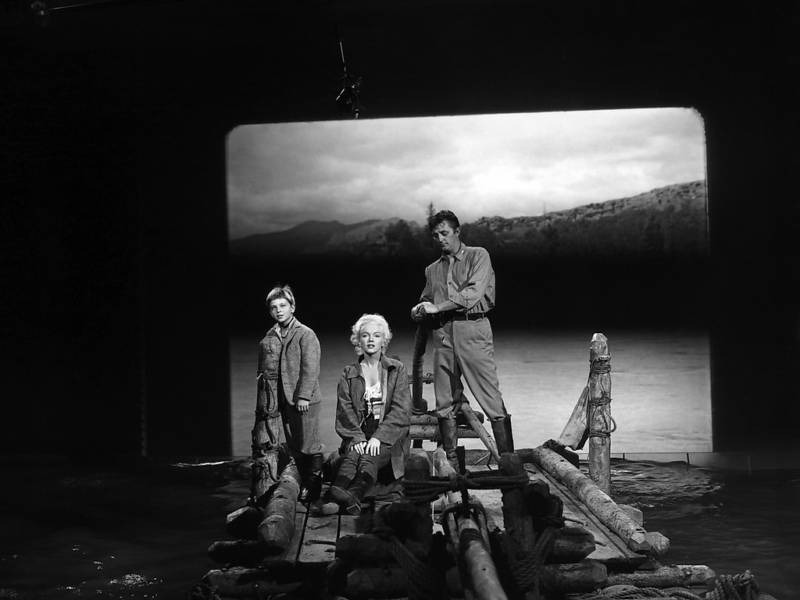
Consider the case of “2001: A Space Odyssey.” Director Stanley Kubrick faced logistical difficulties in filming a scene set in a remote part of Southwest Africa. Instead, his team captured landscapes on location and projected them onto a back wall in a studio. While this technique, known as front projection, was not entirely new, its large-scale implementation inspired future filmmakers.
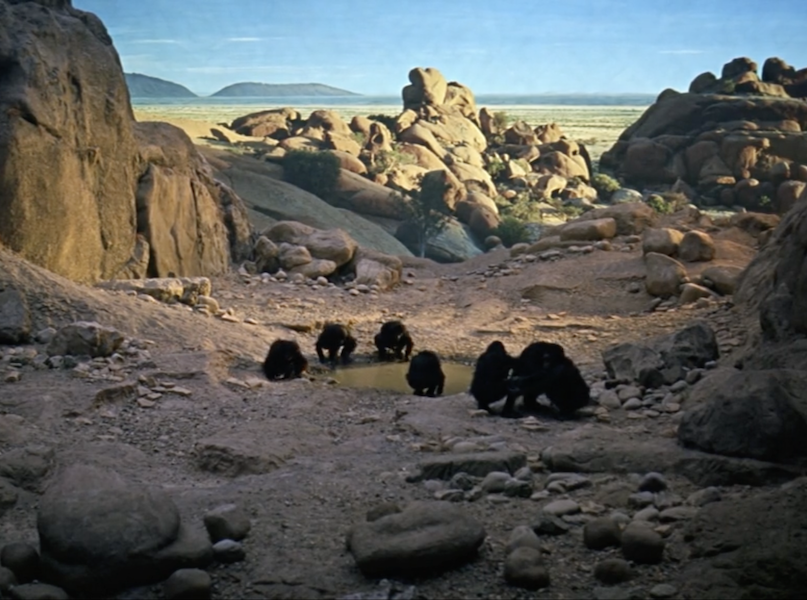
The Limitations of Green Screen
Filming with green screens, or chroma keying, has been a common practice due to its affordability and utility. However, it often falls short in terms of visual quality. The lack of real-time feedback during filming means that the final result can appear subpar without meticulous planning. Filmmakers, including the acclaimed Christopher Nolan, have expressed their frustration with the limitations of green screen techniques.
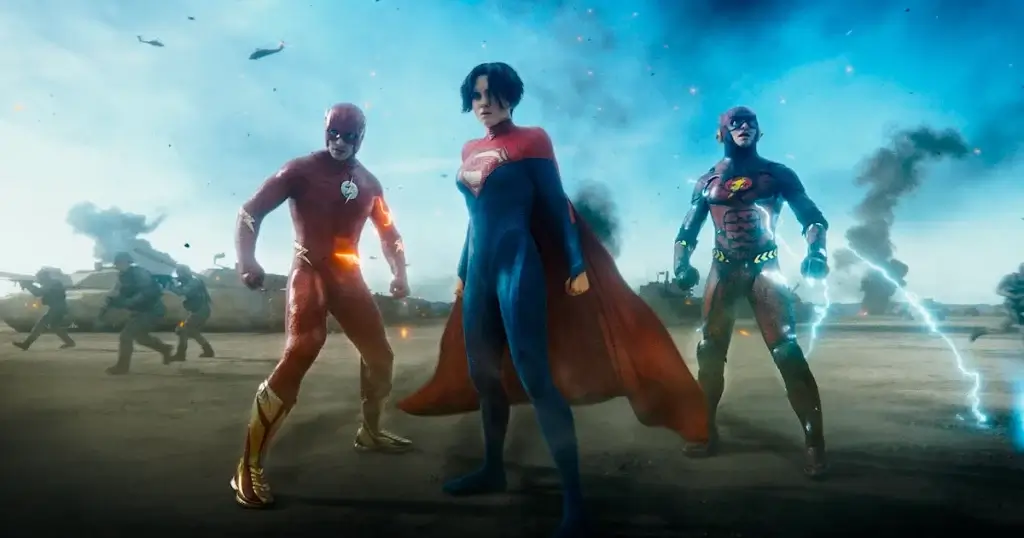
The Advantages of Virtual Production
Virtual production presents several significant advantages over traditional methods, including:
- Elimination of bulky green screens and expensive post-production editing, resulting in faster turnaround times for shooting and editing scenes.
- Continuous evolution and potential to revolutionise media creation and consumption.
- Real-time visualisation, enabling filmmakers to see how shots will look in the final video before post-production begins.
- Logistical ease, as virtual studios allow for instant background changes without the need to physically relocate crews.
- Extended magic hour, providing access to stunning virtual sunsets and desired lighting conditions at any time, making them ideal for smaller budgets.
The Intricacies of Virtual Production
Now, let’s delve into the fascinating technical aspects of virtual production. VFX artists utilise Unreal Engine 3D software to create astonishingly realistic images, blurring the lines between the virtual and real world. Unreal Engine, renowned as a playground for creators, empowers them to design ultra-realistic worlds for gamers to explore.
These mesmerising images, known as Nanite imports, showcase Unreal Engine 5’s advanced geometry system. With remarkable attention to detail, this system renders every element and object with pixel-perfect precision, resulting in sharp, lifelike visuals.
To bring the virtual world to life, assets are composited onto LED walls, enveloping the studio environment and immersing filmmakers in a completely new realm.
The synchronised cameras work in harmony with the game engines, adding depth and realism to the virtual elements within the scene. This dynamic partnership allows real-time changes to the virtual set, eliminating the need for time-consuming post-production edits. Furthermore, Unreal Engine’s Parallax Effect adjusts the background’s perspective based on camera movements, delivering smoother and more authentic production.
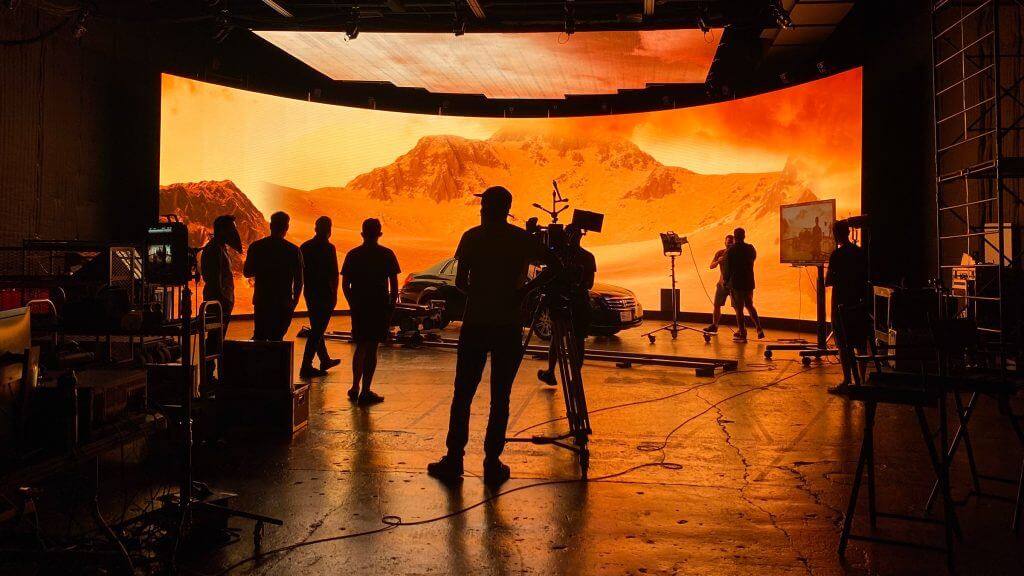
The Promising Future of Virtual Production
Virtual production offers an exciting glimpse into the future of entertainment and media creation. By eliminating the constraints of physical locations, filmmakers can craft immersive experiences that captivate audiences. Although virtual studios can present challenges due to their technical intricacies and costs, the potential benefits make them a compelling option to consider.
Contact Us for Your Next Video Project
If you’re considering incorporating virtual production into your next video project, our team of experts is ready to guide you through the process. Contact us today to explore how virtual production can enhance your video strategy.
Jove Tyson
7 March 2023
